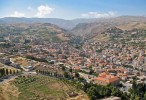In the wake of last month’s Abu Dhabi Adventure Challenge, Lucy Taylor talks to race director Thierry Anselme-Martin about the highs, lows and potential pitfalls of organising a major sporting event
How did you go about deciding on the routes for each phase of this year’s Abu Dhabi Adventure Challenge?
This was the third Abu Dhabi Adventure Challenge, so we now know the country very well and we know precisely where we can go and what we can do with the race.
We also speak with the racers after each edition to get their input and opinions, and take that into account when deciding on the route.
Every year, we try to change the course and discover a new part of the country. The Adventure Challenge route is basically a mix of everything we could find in Abu Dhabi: sea and mangrove, desert, mountain and oasis. To make some changes for 2009, we found a new kayak section and we added a swimming section.
The Empty Quarter in Liwa [where the two-day orienteering section of the Challenge took place] is simply amazing; we felt it was it was very important to have [the trek] run over a couple of days, to give the competitors time to get that real ‘desert feeling’.
So every year, we change the route — but honestly, even if you passed by the same route, you probably wouldn’t remember it from one year to the next! Every year, we also change the way in which competitors climb Jebel Hafeet and organise different rope jobs.

Advertisement
What was your aim when developing this year’s competition course?
The primarily factor for us is always the security of the competitors and we always keep this point in mind when we draw up the route.
The second issue is the level of interest for racers; we try to find the best place to practice each discipline in a natural environment.
What, in your view, was the most difficult phase for competitors, and why?
Probably the desert section, because it was the longest and the weather was very hot this year.
You have to prepare your feet and take properly adapted equipment to run into the sand. The mountain bike section also turned out to be particularly difficult this year, due to a very strong head-wind.
What was the biggest logistical challenge of putting the event together?
We don’t organise this kind of race in a stadium — our stadium is the entire country! So the issues are getting the permit to organise the race; ensuring competitors’ safety at any time, anywhere during the race (even during the night in the middle of the desert we should be able to reach any team in minimal time); and finally, transporting all the required elements — such as bikes, kayaks, and base camp equipment — to the sites on time.
What is the big appeal of Abu Dhabi as a sports event setting?
The destination is still relatively unknown in this arena, so the location generates a lot of curiosity.
Also, few people realise the diversity of the environment: the draw for us is very clear.
ADAC BY THE NUMBERS
- Forty teams representing 20 nations from five continents took part in the six-day, multi-discipline Abu Dhabi Adventure Challenge, vying for US $40,000 of prize money for the winning team.
- The 2009 Abu Dhabi Adventure Challenge was the most trying to date, with a new 428km cross-emirate route.
- 12 ambulances were on stand-by during the event’s six days, including mobile ambulance facilities mounted on army-code Humvee trucks, to access even the most inhospitable types of terrain.
- More than 400 personnel assisted with the staging of Abu Dhabi Adventure Challenge 2009, including air and sea pilots, medical crews, logistics teams, water and power supply technicians, transportation crews and remote satellite installation experts.
- Each participant burned more than 7000 calories a day — three times the daily recommended rate for an average grown man.
- Racers had to consume at least 10 litres of water a day to stave off the effects of dehydration.









 Search our database of more than 2,700 industry companies
Search our database of more than 2,700 industry companies









